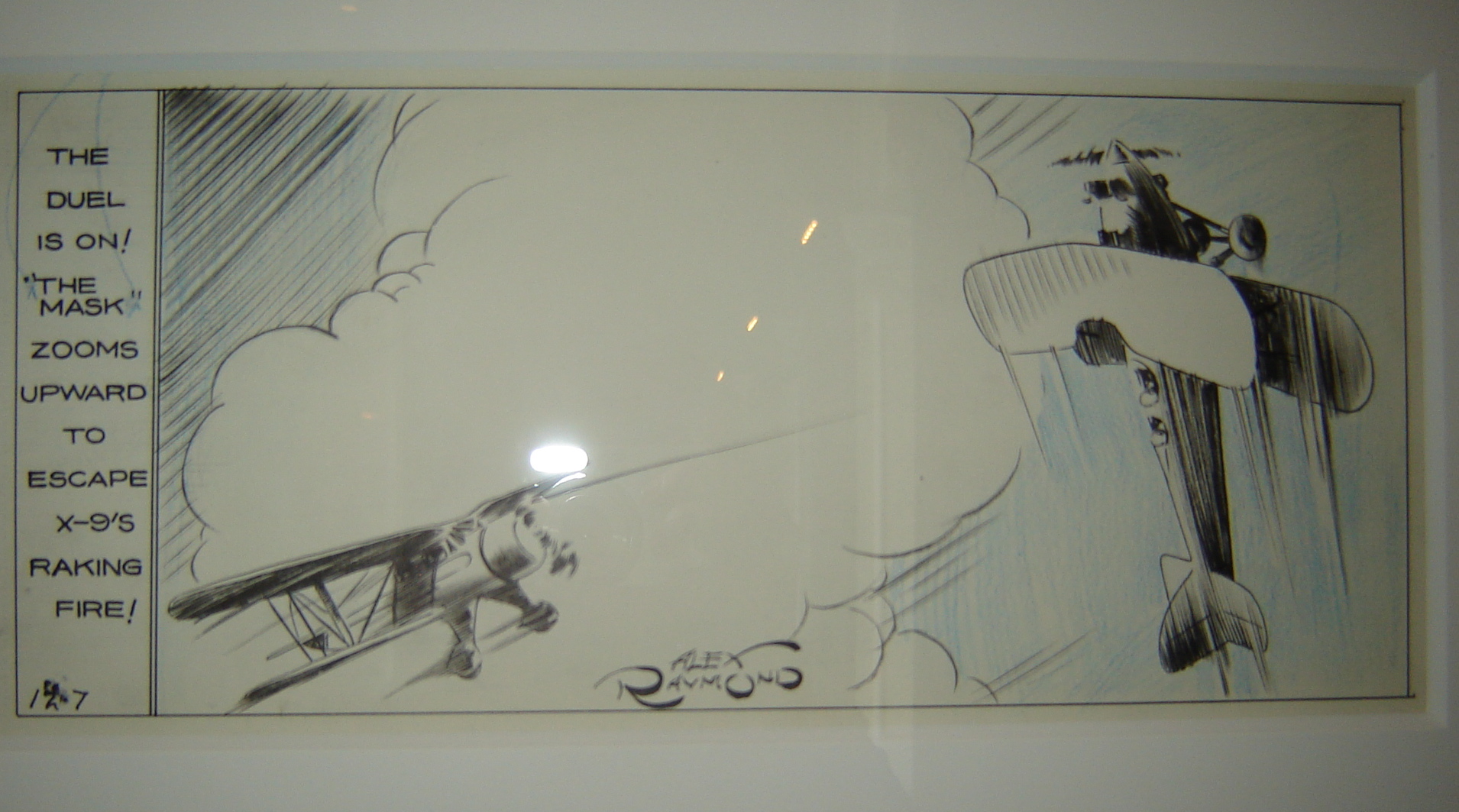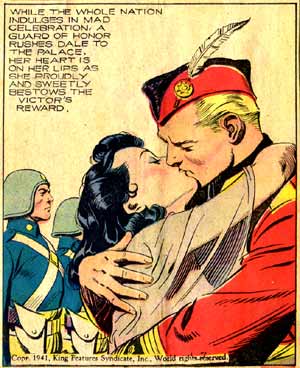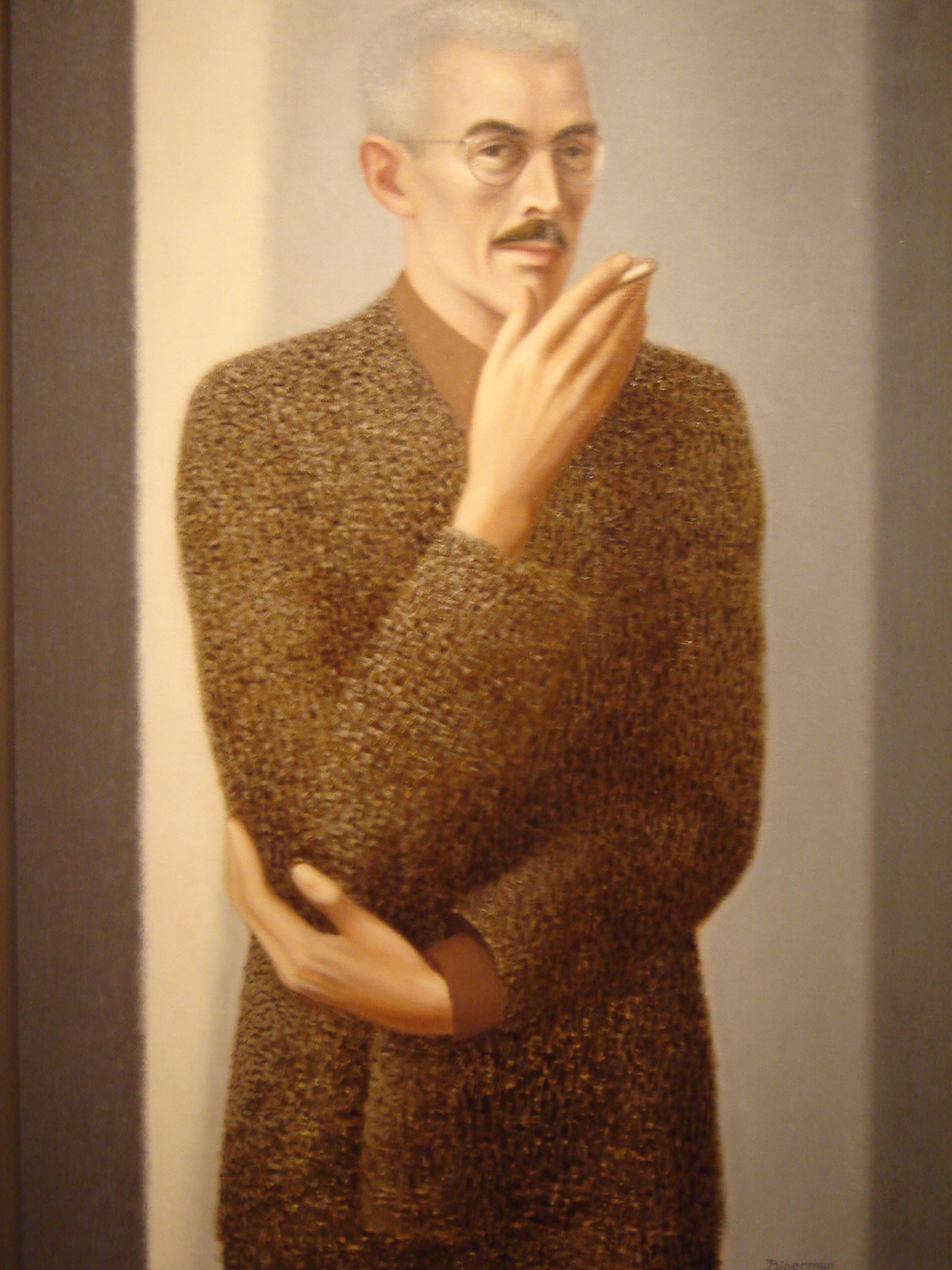On Saturday I went into DC and visited the Library of Congress. I was a bit disappointed I didn’t have a readers card to access the reading rooms (AMAZING!) and that they didn’t have their “American Treasures” exhibit open (apparently they had lent a lot of things to the Ford Theater for their anniversary celebration of Shakespeare), but I did get to see the Miens Bible (what is supposedly the last handwritten Bible) and the Guttenberg Bible as well as an exhibit called “Cartoon America.” I was surprised to find a comic called Secret Agent X-9, written by Dashiell Hammett. So of course, I had to take a picture to post to my blog! To make viewing a bit easier, I’ve broken the strip down into three images. I’ve also transcribed what the explanation plate beside it said:
In this airplane sequence the title character, Special Agent X-9, stands at the cockpit aiming his machine gun at a plane carrying “The Mask.” Dashiell Hammett wrote the script and Alex Raymond (1906-1956) drew the hard-boiled detective comic strip. Hammett left after writing four stories, and Raymond too, stopped drawing the strip to devote his time to Flash Gordon. Raymond transformed the art of the comic strip from tight pen-and-ink drawing to loose dry brush strokes to create a sense of dynamic action. He was drawing his strip about a scientific detective, Rip Kirby, when he died in an automobile accident. (The strip was published December 7, 1934)

I think what’s great about this strip is that you can tell its done in Hammett’s style; the spars prose and coloring really suits him. I also love the progression in the framing of the panels. First, we have a fairly close, tight shot, packed with a lot of people and a good amount of things going on. But, this is scene is all about setting up the story. Next, the scene becomes a bit simpler, focusing on just two characters with a third, threatening object in the background. Here we get a slight sense of upward motion as the scene builds, especially with Raymond’s use of quick, blurred lines in the body of the plane. Finally, we reach the strip’s climax, with a plane literally shooting upwards, mimicking the drastic upward motion of the end of Hammett’s paragraphs, where the most important and thrilling piece of information is revealed or action takes place. So, like the film adaptations and the novel, the comic strip has the same rising action “graph.”
For comparison, I’ve included a 1941 strip; a strip from after the time Hammett stopped writing the story lines. Here we see more of the romance of the strip, but we see the narration seems to have strayed slightly from what was characteristic of Hammett.

I also went to the National Portrait Gallery, where a portrait of Hammett was included in their “Twentieth Century Americans” exhibit. Alas, then I walked across the street to the Spy Museum where I didn’t see anything relevant to Hammett. Though maybe I didn’t look hard enough – they have a LOT of cool spy things!

Very dapper Dashiell.
